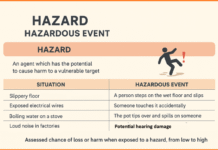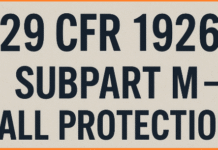Pipeline pigging, a maintenance practice in the oil and gas industry, involves the use of cleaning pigs to enhance flow efficiency and inspect pipelines for potential defects. Despite its seemingly straightforward nature, pigging operations pose inherent hazards that, if not properly identified and mitigated, can lead to accidents, property damage, and health issues. This blog post delves into the hazards associated with pipeline pigging and highlights key considerations for ensuring safe operations.
Contents
Hazards in pigging:
- Pressure Hazards:
- The pressure differential between the launch and receipt sites is a major hazard in pigging operations. Proper management of pressure is critical to prevent accidents and equipment damage.
- Chemical Hazards:
- Chemical hazards such as pyrophoric dust, hydrogen sulfide (H2S), Naturally Occurring Radioactive Materials (NORMS), and Benzene, Toluene, Ethylbenzene, and Xylene (BTEX) can lead to explosions, health issues, and environmental damage. Effluent handling and management are crucial to mitigating these risks.
Risk Evaluation:
Before initiating pigging operations, it is essential to evaluate the risks associated with identified hazards. This involves assessing the likelihood and severity of harm that pressure differentials and chemical hazards could cause.
Key Factors for Consideration:
- Pig Trap Design:
- Ensure that pig traps are well-designed and maintained to handle the pressure and flow conditions during pigging.
- Valve Integrity:
- Regularly inspect and maintain valves to ensure their integrity. Malfunctioning valves can contribute to pressure-related incidents.
- Plugged Vents:
- Monitor and prevent vent blockages to maintain proper pressure relief mechanisms.
- Hazard Awareness:
- Conduct thorough hazard awareness training for personnel involved in pigging operations. Knowledgeable and alert operators are essential for safe procedures.
- Effluent Handling and Management:
- Develop robust procedures for handling effluents, including chemicals and waste, to minimize environmental impact and health risks.
Risk Mitigation:
To mitigate the identified hazards and associated risks, the following steps are crucial:
- Checklist Development:
- Develop a comprehensive checklist to ensure the functionality of valves and pigging ancillaries.
- Safe Work Procedures:
- Conduct a risk assessment for each step of the launching and receiving procedures, addressing any gaps identified. Develop and follow safe work procedures.
- Stuck Pig Procedure:
- Establish a procedure for dealing with a stuck pig, identifying potential causes and resolutions. Consider implementing Management of Change (MoC) and updating risk assessments as needed.
- Emergency Response Plan:
- Develop an emergency response plan that identifies potential emergency scenarios and outlines specific actions to be taken. Include contact details for responders.
Pipeline pigging is a valuable maintenance practice, safety should always be the top priority. By understanding and addressing the hazards associated with pressure differentials and chemical exposure, operators can conduct pigging operations safely, minimizing risks and ensuring the integrity of both personnel and infrastructure.





